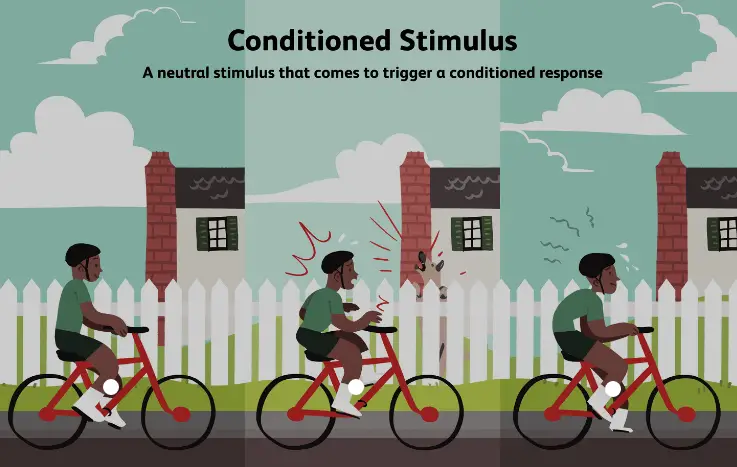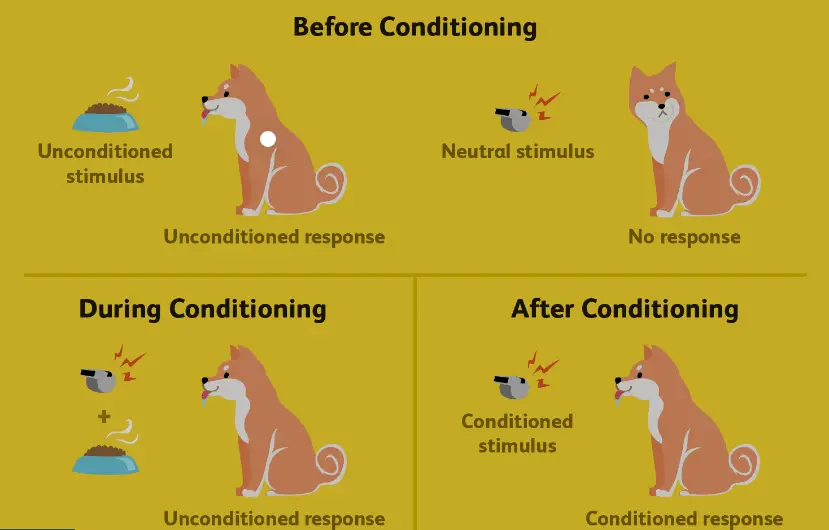Classical conditioning remains a fundamental principle in behavioral psychology, spotlighting the profound impact of learned behaviors. At the heart of this concept are stimuli, specifically the conditioned and unconditioned, which facilitate an understanding of how automatic responses to the environment are developed. This psychological process not only helps decode animal behavior but also explains a lot of human responses.
The difference between a conditioned stimulus (CS) and an unconditioned stimulus (US) lies in their association with a response. A conditioned stimulus does not initially elicit a natural response until it is paired with an unconditioned stimulus, which naturally triggers a reaction. Over time, the conditioned stimulus alone can evoke a similar response, showcasing the power of learned associations.
Exploring these stimuli provides insights into the mechanics of learning and adaptation. The conditioned stimulus represents a learned factor, whereas the unconditioned stimulus is inherently effective. Each plays a crucial role in the behavioral responses observed in both clinical settings and daily experiences, influencing everything from emotional reactions to choices driven by subtle cues.

Basic Concepts
Classical Conditioning
Classical conditioning is a learning theory discovered by Ivan Pavlov, a Russian physiologist. In the late 19th century, Pavlov was studying the digestive system of dogs when he noticed an accidental phenomenon: the dogs would begin to salivate before they even tasted food. This observation led to the groundbreaking experiment where Pavlov used a bell as a neutral stimulus. By ringing the bell before offering food, the bell (conditioned stimulus) eventually triggered salivation (conditioned response) on its own. This experiment laid the foundation for what would later be known as classical conditioning, illustrating how associative learning modifies behavior through repeated pairings of stimuli.
Stimuli in Psychology
In psychology, stimuli refer to any object or event that elicits a sensory or behavioral response in an organism. Stimuli can be divided into two broad categories:
- External stimuli: These are sourced from the environment, such as sounds, images, and temperatures.
- Internal stimuli: These arise from within the body, like hunger or thirst.
Each type plays a vital role in how organisms interact with their surroundings and make decisions, crucial for survival and adaptation.
Conditioned Stimulus
Identification
A conditioned stimulus (CS) is initially a neutral stimulus that, after being paired repeatedly with an unconditioned stimulus (US), begins to elicit a similar response. The classic example is Pavlov’s bell: initially meaningless to the dogs, it became a significant trigger for salivation after being associated with food.
Creation Process
The process of forming a conditioned stimulus involves several steps:
- Presentation of the neutral stimulus: The neutral stimulus, which does not elicit a relevant response initially, is identified.
- Pairing: The neutral stimulus is consistently presented along with an unconditioned stimulus that naturally triggers a response.
- Association formation: Over time, the organism begins to associate the neutral stimulus with the unconditioned stimulus.
- Response elicitation: Eventually, the neutral stimulus alone elicits the response initially triggered by the unconditioned stimulus.
Key Features
Characteristics of a conditioned stimulus include:
- Learned relevance: Unlike unconditioned stimuli, the significance of a conditioned stimulus is learned, not innate.
- Specificity: The response it elicits is usually very specific, tied to the nature of the unconditioned stimulus it was paired with.
- Temporal dependence: The effectiveness of conditioning often depends on the timing of the stimulus presentation.
Unconditioned Stimulus
Identification
An unconditioned stimulus (US) is any stimulus that can naturally and automatically elicit a response without prior conditioning. For example, when a person flinches at a loud sound, the sound is an unconditioned stimulus causing an unconditioned response of flinching.
Natural Response
Unconditioned stimuli are integral to unconditioned responses, which are innate, immediate reactions that do not require learning. These responses are crucial for an organism’s survival, as they often involve reflexes and primary needs such as food, pain avoidance, and mating.
Key Features
Features of an unconditioned stimulus include:
- Innateness: It inherently elicits a response without the need for learning or prior exposure.
- Universality: Typically, unconditioned stimuli elicit responses across all individuals of a species.
- Predictability: The response to an unconditioned stimulus is consistent and predictable, important for studying behavior in a controlled environment.

Comparison of Stimuli
Similarities
Both conditioned and unconditioned stimuli play integral roles in classical conditioning, sharing several commonalities:
- Trigger Responses: Both types of stimuli are key in eliciting responses. While the nature of these responses differs, the fundamental role of triggering a reaction is central to both.
- Learning Influence: Each stimulus, whether conditioned or unconditioned, influences learning processes in organisms. They facilitate the understanding of environmental cues and appropriate reactions.
- Behavioral Adaptation: These stimuli are crucial in adapting behaviors. Through exposure to these stimuli, organisms learn to anticipate and react to their environment more effectively.
Differences
Despite their roles in eliciting responses, conditioned and unconditioned stimuli differ markedly:
- Origin of Response: Conditioned stimuli acquire their ability to elicit responses through learning and association, whereas unconditioned stimuli naturally elicit responses without any prior learning.
- Dependency on Context: The efficacy of a conditioned stimulus is heavily dependent on the context and its association with the unconditioned stimulus. In contrast, an unconditioned stimulus elicits a response regardless of context.
- Flexibility in Application: Conditioned stimuli can be developed from virtually any neutral stimulus, giving them a broader range of applications in learning and behavior modification.
Role in Learning
Understanding how each type of stimulus contributes to behavior change is crucial:
- Conditioned Stimuli: These are pivotal in associative learning, where they help form new connections between previously unrelated phenomena. This learning is essential in environments where flexibility and adaptation to new situations are vital.
- Unconditioned Stimuli: They are fundamental in reflexive responses that do not require learning. These responses are critical in situations requiring immediate reaction, such as pulling away from a hot surface.
Practical Applications
In Therapy
Conditioned stimuli are widely used in therapeutic settings to modify behaviors and treat conditions such as phobias and addictions. Techniques include:
- Systematic Desensitization: Gradually exposing a patient to a conditioned stimulus without the presence of the unconditioned stimulus to diminish the learned response.
- Counterconditioning: Introducing a new response to the conditioned stimulus that is incompatible with the unwanted behavior.
In Education
Both types of stimuli are utilized in educational techniques to enhance learning:
- Positive Reinforcement: Using conditioned stimuli, like verbal praise or good grades, to increase desirable behaviors such as participation and homework completion.
- Direct Instruction: Employing unconditioned stimuli, such as showing real-world objects or conducting live demonstrations, to elicit natural curiosity and understanding.
In Advertising
Advertisers skillfully use conditioned stimuli to influence consumer behavior:
- Brand Association: Brands often associate their products with positive unconditioned stimuli, such as attractive scenery or enjoyable music, to create favorable conditioned responses towards their products.
- Repetition and Familiarity: Through repeated exposure to specific brand elements as conditioned stimuli, consumers develop a familiarity that can influence purchasing decisions.
FAQs
What is Classical Conditioning?
Classical conditioning is a learning process first described by Ivan Pavlov. In this model, an organism learns to associate a neutral stimulus with a biologically significant one, eventually responding to the neutral stimulus as if it were significant.
How does a Conditioned Stimulus work?
A conditioned stimulus works by becoming associated with an unconditioned stimulus through repeated pairings. Initially neutral, the conditioned stimulus eventually triggers a conditioned response similar to the one elicited by the unconditioned stimulus.
What is an example of an Unconditioned Stimulus?
An unconditioned stimulus is any stimulus that naturally and automatically triggers a response without prior learning. For example, the smell of food is an unconditioned stimulus that naturally causes salivation in many animals.
Can the effect of a Conditioned Stimulus be reversed?
Yes, the effect of a conditioned stimulus can be reversed through a process called extinction. This occurs when the conditioned stimulus is presented repeatedly without the unconditioned stimulus, leading to a decrease in the conditioned response over time.
Conclusion
The exploration of conditioned and unconditioned stimuli sheds light on the intricate processes of learning and behavior modification. Through understanding these stimuli, one gains insight into the fundamental mechanisms that underlie both human and animal behaviors. This knowledge is instrumental in various applications, from therapeutic techniques to educational strategies, enhancing our ability to influence and adapt behaviors in beneficial ways.
The implications of such psychological principles extend beyond academia, influencing practical aspects of daily life and societal norms. Recognizing the roles and effects of different stimuli allows for a more nuanced interaction with our environment, leading to more informed and adaptive behaviors in ever-changing contexts.

